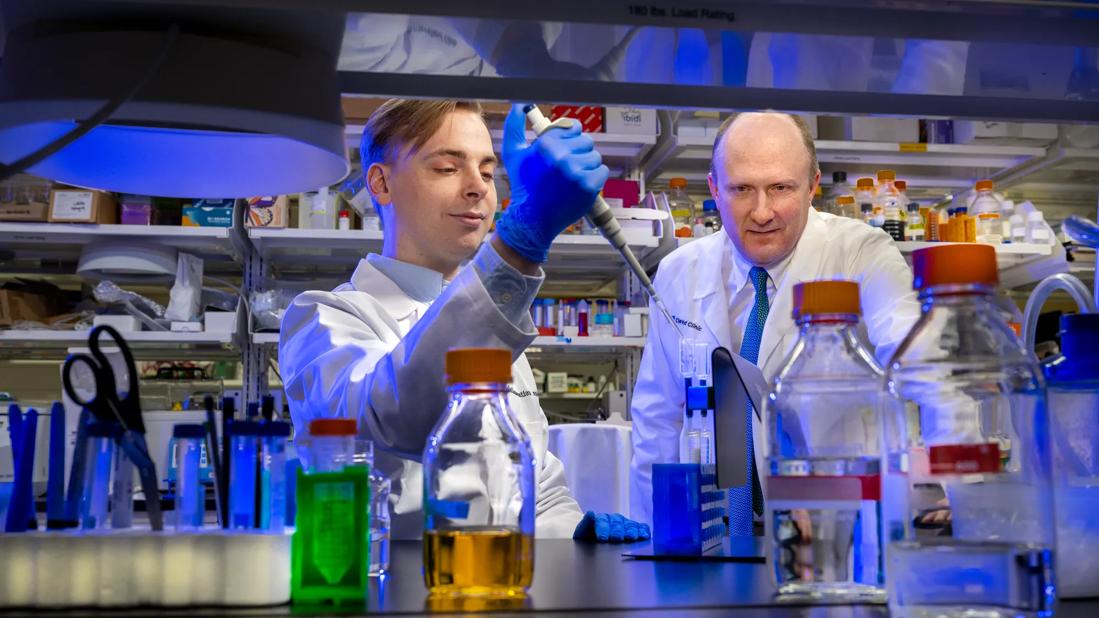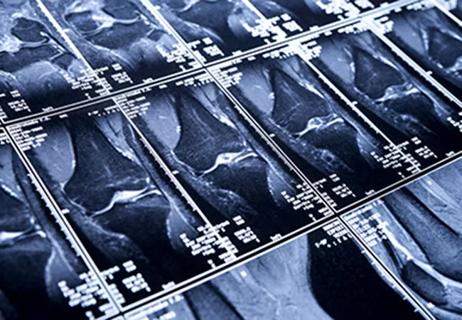High efficacy reported for vaccine candidates in interim analyses

Moderna and Pfizer/BioNTech SE last week announced positive results from the interim analyses of phase-3 trial data of their respective vaccine candidates against COVID-19, mRNA-1273 and BNT162b2. Moderna’s mRNA-1273 was reported to have a 94.5% efficacy; similarly, Pfizer/BioNTech SE reported a 95% efficacy for BNT162b2. Both trials enrolled more than 30,000 patients.
Advertisement
Cleveland Clinic is a non-profit academic medical center. Advertising on our site helps support our mission. We do not endorse non-Cleveland Clinic products or services. Policy
The news was met with enthusiasm from government officials around the world, as countries continue to grapple with public health concerns and an economic downfall brought on by a pandemic of unseen proportions in more than 100 years.
But what does this mean for the general population and healthcare workers battling the virus on the frontlines?
“We still have to take this one step at a time,” says immunologist Thaddeus Stappenbeck, MD, PhD, Chair of the Department of Inflammation and Immunity at the Cleveland Clinic Lerner Research Institute. “There are still so many unknowns. We don’t know the durability of the immune response, one of the key things that has been pointed out. We’re also hoping that the long-term safety will play out — we really just have short-term data at the moment.”
In terms of efficacy, Dr. Stappenbeck says that greater than 90% efficacy for a viral vaccine is considered very high, and that the exciting thing about the Pfizer/BioNTech SE trial is that it was conducted worldwide in a number of different populations.
“That’s very important because viral responses can vary depending on where one lives on the planet, as they are affected by diet, the environment and genetics,” he says. “We have some assurance that we’re going to see that this will work in multiple types of people and in multiple locations.”
Moderna’s COVE study was conducted in collaboration with the National Institute of Allergy and Infectious Diseases (NIAID) and the U.S. Department of Health and Human Services. On November 16, 2020, Moderna announced that the study met the pre-specified efficacy endpoint, and that the interim analysis did not identify any significant safety concerns. In an analysis of 95 COVID-19 cases, 90 cases were observed in the placebo group compared to five cases in the mRNA-1273 group (94.5% efficacy). Most observed side effects were of mild or moderate intensity. Grade 3 injection site pain was reported in 2.7% of subjects after the first dose. Grade 3 fatigue, myalgia, arthralgia, headache, and pain were observed in 9.7%, 8.9%, 5.2%, 4.5% and 4.1% of subjects, respectively, after the second dose.
Advertisement
On November 18, 2020, Pfizer and BioNTech SE announced that BNT162b2 met all of the primary efficacy endpoints outlined in the study protocol. Of a total of 170 COVID-19 cases identified in the first primary objective analysis, 162 were observed in the placebo group, compared to eight cases in the BNT162b2 group. Vaccine efficacy was reported to be consistent across the different age, race, gender and ethnicity groups, and an efficacy rate of 94% was maintained in adults over 65 years of age. The vaccine was well tolerated overall. Fatigue (3.8%) and headache (2.0%) were the only Grade 3 adverse events reported at a frequency greater than 2%.
“These are relatively transient and mild symptoms — that’s what I understand,” says Dr. Stappenbeck. What the researchers in these trials are looking out for, he adds, is the potential production of additional non-neutralizing antibodies that can be associated antibody-dependent enhancement, a potential serious complication that can develop upon subsequent infection with SARS-CoV-2. The phenomenon has not been reported with these two vaccine candidates to date.
“To me, the exciting thing is that they haven’t seen that. Also, at this point, there is no evidence for the development of antibodies that cross-react with our own proteins causing an autoimmunity. Again, there is no evidence in either trial for this severe side effect, which is great news.”
Dr. Stappenbeck explains that both vaccine candidates were developed using mRNA technology, a departure from the egg-based technology traditionally used in the development of inactivated or live attenuated influenza vaccines. The advantage of using mRNA technology includes greater speed of vaccine development, efficacy and improved scalability; however, Dr. Stappenbeck notes that the lack of experience and associated “unknowns” can pose a challenge.
Advertisement
As the next step in the authorization process, Moderna and Pfizer/BioNTech SE will have to submit comprehensive phase 3 trial data for their vaccine candidates to the FDA and obtain Emergency Use Authorization (EUA). The FDA’s EUA review process can take anywhere from 2-4 weeks; in the meantime, health centers throughout the United States are preparing for storage and distribution of tens of thousands of vaccine doses.
“In Ohio, 10 sites will be able to distribute vaccines and Cleveland Clinic is one of those sites – we can store, from what I understand, up to 100,000 units,” he says. “Everyone is going to want it for their healthcare workers and, hopefully, by the end of the year.”
Advertisement
Advertisement

Distribution is beginning, but there are questions about effectiveness, supply and adverse events

22,000-square-foot facility boosts biobanking capacity for research projects

Cleveland Clinic forms Global Center for Pathogen Research & Human Health

Research to investigate non-invasive method aims to identify patients at risk for osteoarthritis

Targeting the microbe-host adhesion process

Proteins important in opening blood vessels, storing oxygen and fighting off bacterial infections

Variants uncovered include ADAMTS6

Questioning prevailing accuracy measurement methods